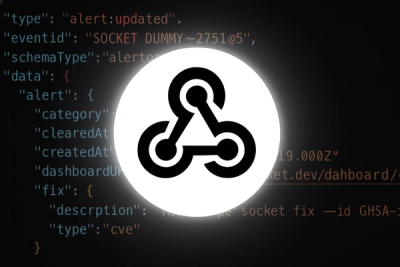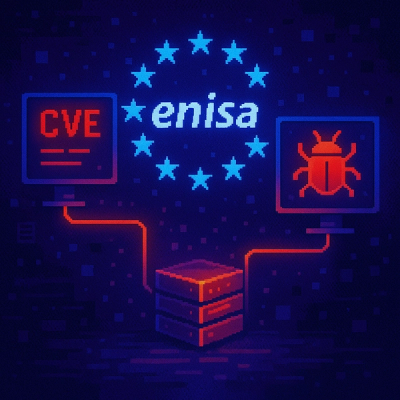
Product
Introducing Webhook Events for Alert Changes
Add real-time Socket webhook events to your workflows to automatically receive software supply chain alert changes in real time.
@tensorflow/tfjs-automl
Advanced tools
This packages provides a set of APIs to load and run models produced by AutoML Edge.
This packages provides a set of APIs to load and run models produced by AutoML Edge.
If you are using npm/yarn
npm i @tensorflow/tfjs-automl
If you are using CDN:
<script src="https://cdn.jsdelivr.net/npm/@tensorflow/tfjs-automl"></script>
We support the following types of AutoML Edge models:
AutoML Image classification model will output the following set of files:
model.json, the model topologydict.txt, a newline-separated list of labels*.bin files which hold the weightsMake sure you can access those files as static assets from your web app by serving them locally or on Google Cloud Storage.
The image classification demo lives in demo/img_classification. To run it:
cd demo/img_classification
yarn
yarn watch
This will start a local HTTP server on port 1234 that serves the demo.
import * as automl from '@tensorflow/tfjs-automl';
const modelUrl = 'model.json'; // URL to the model.json file.
const model = await automl.loadImageClassification(modelUrl);
If you do not want (or cannot) load the model over HTTP you can also load the model separately and directly use the constuctor. This is particularly relevant for non-browser platforms.
The following psuedocode demonstrates this approach:
import * as automl from '@tensorflow/tfjs-automl';
import * as tf from '@tensorflow/tfjs';
// You can load the graph model using any IO handler
const graphModel = await tf.loadGraphModel(string|io.IOHandler); // a url or ioHandler instance
// You can load the dictionary using any api available to the platform
const dict = loadDictionary("path/to/dict.txt");
const model = new automl.ImageClassificationModel(graphModel, dict);
The AutoML library takes care of any image preprocessing
(normalize, resize, crop). The input img you provide can be
HTMLImageElement,
HTMLCanvasElement,
HTMLVideoElement,
ImageData or
a 3D Tensor:
<img id="img" src="PATH_TO_IMAGE" />
const img = document.getElementById('img');
const options = {centerCrop: true};
const predictions = await model.classify(img, options);
options is optional and has the following properties:
centerCrop - Defaults to true. Since the ML model expects a square image,
we need to resize. If true, the image will be cropped first to the center before
resizing.The result predictions is a sorted list of predicted labels and their
probabilities:
[
{label: "daisy", prob: 0.931},
{label: "dandelion", prob: 0.027},
{label: "roses", prob: 0.013},
...
]
Advanced users can access the underlying
GraphModel via
model.graphModel. The GraphModel allows users to call lower level methods
such as predict(), execute() and executeAsync() which return tensors.
model.dictionary gives you access to the ordered list of labels.
AutoML Object detection model will output the following set of files:
model.json, the model topologydict.txt, a newline-separated list of labels*.bin files which hold the weightsMake sure you can access those files as static assets from your web app by serving them locally or on Google Cloud Storage.
The object detection demo lives in demo/object_detection. To run it:
cd demo/object_detection
yarn
yarn watch
This will start a local HTTP server on port 1234 that serves the demo.
import * as automl from '@tensorflow/tfjs-automl';
const modelUrl = 'model.json'; // URL to the model.json file.
const model = await automl.loadObjectDetection(modelUrl);
If you do not want (or cannot) load the model over HTTP you can also load the model separately and directly use the constuctor. This is particularly relevant for non-browser platforms.
The following psuedocode demonstrates this approach:
import * as automl from '@tensorflow/tfjs-automl';
import * as tf from '@tensorflow/tfjs';
// You can load the graph model using any IO handler
const graphModel = await tf.loadGraphModel(string|io.IOHandler); // a url or ioHandler instance
// You can load the dictionary using any api available to the platform
const dict = readDictionary("path/to/dict.txt");
const model = new automl.ObjectDetectionModel(graphModel, dict);
The AutoML library takes care of any image preprocessing
(normalize, resize, crop). The input img you provide can be
HTMLImageElement,
HTMLCanvasElement,
HTMLVideoElement,
ImageData or
a 3D Tensor:
<img id="img" src="PATH_TO_IMAGE" />
const img = document.getElementById('img');
const options = {score: 0.5, iou: 0.5, topk: 20};
const predictions = await model.detect(img, options);
options is optional and has the following properties:
score - Probability score between 0 and 1. Defaults to 0.5. Boxes with score lower than this threshold will be ignored.topk - Only the topk most likely objects are returned. The actual number of objects might be less than this number.iou - Intersection over union threshold. IoU is a metric between 0 and 1 used to measure the overlap of two boxes. The predicted boxes will not overlap more than the specified threshold.The result predictions is a sorted list of predicted objects:
[
{
box: {
left: 105.1,
top: 22.2,
width: 70.6,
height: 55.7
},
label: "Tomato",
score: 0.972
},
...
]
Advanced users can access the underlying
GraphModel via
model.graphModel. The GraphModel allows users to call lower level methods
such as predict(), execute() and executeAsync() which return tensors.
model.dictionary gives you access to the ordered list of labels.
FAQs
This packages provides a set of APIs to load and run models produced by AutoML Edge.
The npm package @tensorflow/tfjs-automl receives a total of 1,210 weekly downloads. As such, @tensorflow/tfjs-automl popularity was classified as popular.
We found that @tensorflow/tfjs-automl demonstrated a not healthy version release cadence and project activity because the last version was released a year ago. It has 11 open source maintainers collaborating on the project.
Did you know?

Socket for GitHub automatically highlights issues in each pull request and monitors the health of all your open source dependencies. Discover the contents of your packages and block harmful activity before you install or update your dependencies.

Product
Add real-time Socket webhook events to your workflows to automatically receive software supply chain alert changes in real time.

Security News
ENISA has become a CVE Program Root, giving the EU a central authority for coordinating vulnerability reporting, disclosure, and cross-border response.

Product
Socket now scans OpenVSX extensions, giving teams early detection of risky behaviors, hidden capabilities, and supply chain threats in developer tools.